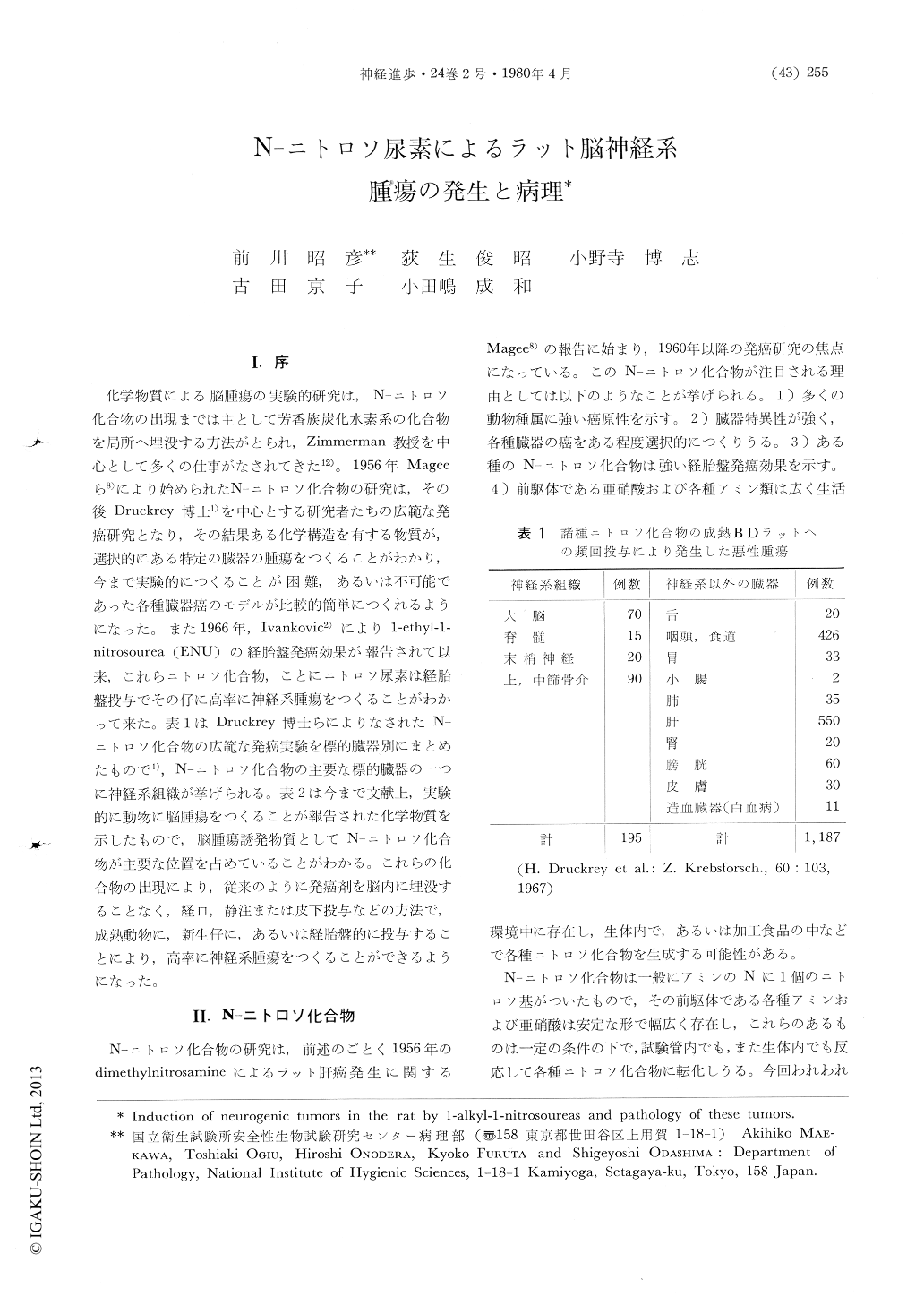Japanese
English
- 有料閲覧
- Abstract 文献概要
- 1ページ目 Look Inside
I.序
化学物質による脳腫瘍の実験的研究は,N-ニトロソ化合物の出現までは主として芳香族炭化水素系の化合物を局所へ埋没する方法がとられ,Zimmerman教授を中心として多くの仕事がなされてきた12)。1956年Mageeら8)により始められたN-ニトロソ化合物の研究は,その後Druckrey博士1)を中心とする研究者たちの広範な発癌研究となり,その結果ある化学構造を有する物質が,選択的にある特定の臓器の腫瘍をつくることがわかり,今まで実験的につくることが困難,あるいは不可能であった各種臓器癌のモデルが比較的簡単につくれるようになった。また1966年,Ivankovic2)により1-ethyl-1-nitrosourea(ENU)の経胎盤発癌効果が報告されて以来,これらニトロソ化合物,ことにニトロソ尿素は経胎盤投与でその仔に高率に神経系腫瘍をつくることがわかって来た。表1はDruckrey博士らによりなされたN-ニトロソ化合物の広範な発癌実験を標的臓器別にまとめたもので1),N-ニトロソ化合物の主要な標的臓器の一つに神経系組織が挙げられる。表2は今まで文献上,実験的に動物に脳腫瘍をつくることが報告された化学物質を示したもので,脳腫瘍誘発物質としてN-ニトロソ化合物が主要な位置を占めていることがわかる。
It is well known that 1-alkyl-1-nitrosoureas are strong carcinogens. In a series of our experiments for carcinogenicity of 1-alkyl-1-nitrosoureas in rats, it was demonstrated that the length of the carbon chain of the alkyl group and also strain of rats used are very important factors in determining the target organ. It is very interesting that a methyl group is most important to induce neurogenic tumors in adult rats by continuous oral administration.
Tumors of the nervous system were induced in female Donryu rats by continuous oral administration of 1-methyl-1-nitrosourea (MNU).

Copyright © 1980, Igaku-Shoin Ltd. All rights reserved.


